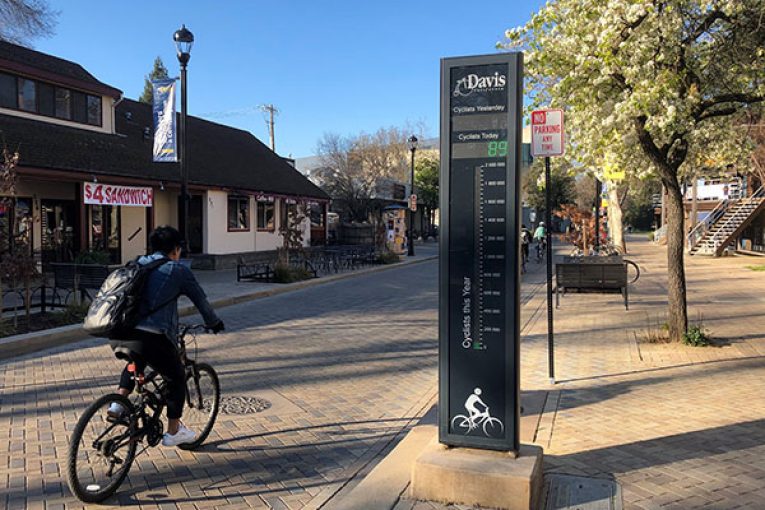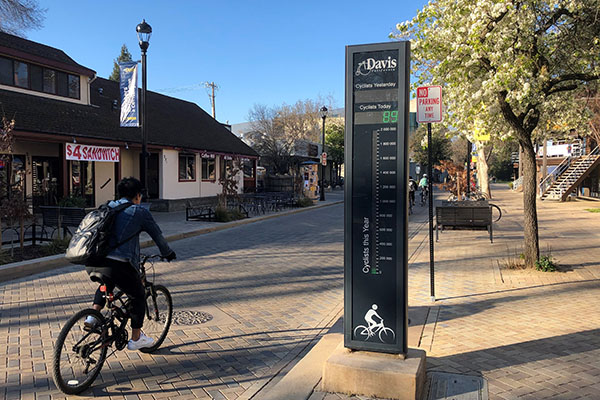

By Nick Marin
Almost to a person, the residents of the city of Davis agree that climate change is a problem and without some action will get worse. Where some differ is exactly how to establish and implement that action.
Take electrification, for example. Currently, the Davis Climate Action & Adaptation Plan focuses far too much on mandatory measures without any real acknowledgement or understanding of cost. While mandatory point of sale measures requiring gas appliances to be retrofitted with electric appliances has reportedly been removed from consideration other mandatory measures still play a prominent role in the important proposal. It clearly places the cart before the horse.
The CAAP relies heavily on what has come to be known as “end of useful life” which would  require, at some level, residents replacing broken or worn out gas appliances with electric models. In theory it makes some sense especially when we understand that the sale of certain gas appliances may be banned by the state or other jurisdictions. However, the mandatory nature of the measure will doom it to fail.
require, at some level, residents replacing broken or worn out gas appliances with electric models. In theory it makes some sense especially when we understand that the sale of certain gas appliances may be banned by the state or other jurisdictions. However, the mandatory nature of the measure will doom it to fail.
It’s no simple, or cheap, feat to change out gas appliances for electric options. During the limited outreach done by city staff it was presented as though it was just common sense. If you have to replace an appliance, when you apply for a permit to do so, you’ll be prohibited from replacing it with a gas version. Simple as that. Unfortunately, it is not that simple.
When a gas range has reached its end of useful life replacing a range from gas to electric may also require you to upgrade your electrical panel to include one or more additional 240v circuits. And, one costly aspect residents may not have on the forefront of their minds is the possibility of needing to modify or redo existing countertops or cabinetry to fit the new electric appliance. These appliances are not “plug and play.”
Our experience tells us that this simple retrofit from a gas to electric range could cost as much as $15,000 or more. Conservative cost analyses of current market costs for appliances and the availability of service providers (i.e. plumbers, contractors, electricians, etc.) put the total cost of all residential electric retrofits at around $30,000-$80,000. Water heaters, furnaces, clothes dryers, outdoor barbecues and firepits are among those which might apply.
Again, we aren’t denying climate change nor are we suggesting that a climate action plan isn’t imperative. We merely want to change the focus. City staff has been adamant in their commitment to obtain grants, credits and rebates to defray some of the costs of retrofitting a home but establishing these mandatory measures without first developing these cost defraying programs dooms the end of useful life policy to fail. The city must first firmly establish a cost mitigation program. Grants, credits and direct rebates must be “shovel ready.” The city should even consider waiving fees for electrification.
When a resident applies for a permit to replace a worn out gas appliance, if the city were to provide them with an established incentive program with some level of assurance, they would very likely take
advantage of the opportunity to electrify and combat climate change. And instead of relying on the already overburdened permitting process as its implementation point, the city should be much more comprehensive.
We’d like the City Council to direct staff to design and develop a program in which City vetted contractors would be given a package of incentives to offer homeowners swapping out gas appliances for electric equipment voluntarily. Identifying and incentivizing reputable contractors and providing them with the education and resources to sell property owners on electrification will give the City the most realistic chance at making an impact on reducing the 7% of greenhouse gas emissions blamed on residential properties. The recent success of the solar program in Davis is proof that voluntary programs that make sense and are marketed aggressively can be significantly impactful.
The Yolo County Association of Realtors, which represents the interests of homeowners and their private property rights, urges city staff and the City Council to change the focus of the CAAP from mandatory to collaborative. If the last few years have taught us anything here in Davis, it is that we do much better as a community when we work together rather than telling each other what to do.
— Nick Marin is the Executive Director of the Yolo County Association of Realtors, a nonprofit founded in 1922 serving to support its members in their ability to practice their profession ethically and effectively, and protecting private property rights.






Nick Marin’s commentary proposes an unrealistic, even infeasible, approach to reducing Davis’ greenhouse gas emissions. He suggests that the City first find funding and then choose what actions to undertake. No one–taxpayers or the state and federal government–will just hand over money to the City without specifying what it will be spent on. The City’s Climate Action and Adaptation Plan (CAAP) makes that first required step–what are the actions that we will undertake. That’s the horse that’s needed. Then we figure out how to fund these actions. That’s the cart. It can’t be done the other way around.
Implementing the plan will require both pulling through incentives and pushing through rules. (I agree with waiving many of the fees on electrification and facilitating other steps. Those are issues to be raised in the next phase of implementation steps.) Relying solely on voluntary actions will not get us their fast enough based on substantial evidence across many programs. Solar rooftop succeeded with subsidies that reached half of the costs. And it has reached less than a third of the single-family homes. The City cannot afford that alone for other measures and outside financing is much more limited.
In addition, one of the programs suggested by Marin is in the CAAP–the carbon mitigation fund. That action envisions using emission mitigation fees to fund a building retrofit program where contractors bid to complete a certain number of houses for a set fee.
The CAAP can be collaborative, but those decisions need to be community wide, not just by individuals. We are going to have to go beyond our self interests to achieve these goals.
Here’s what I’ve written previously on the relative risks of acting or not acting to mitigate climate risk:
https://mcubedecon.com/2019/09/26/our-responsibility-to-our-children/